
Content of the IEP
General Information
IEP Form Example Section
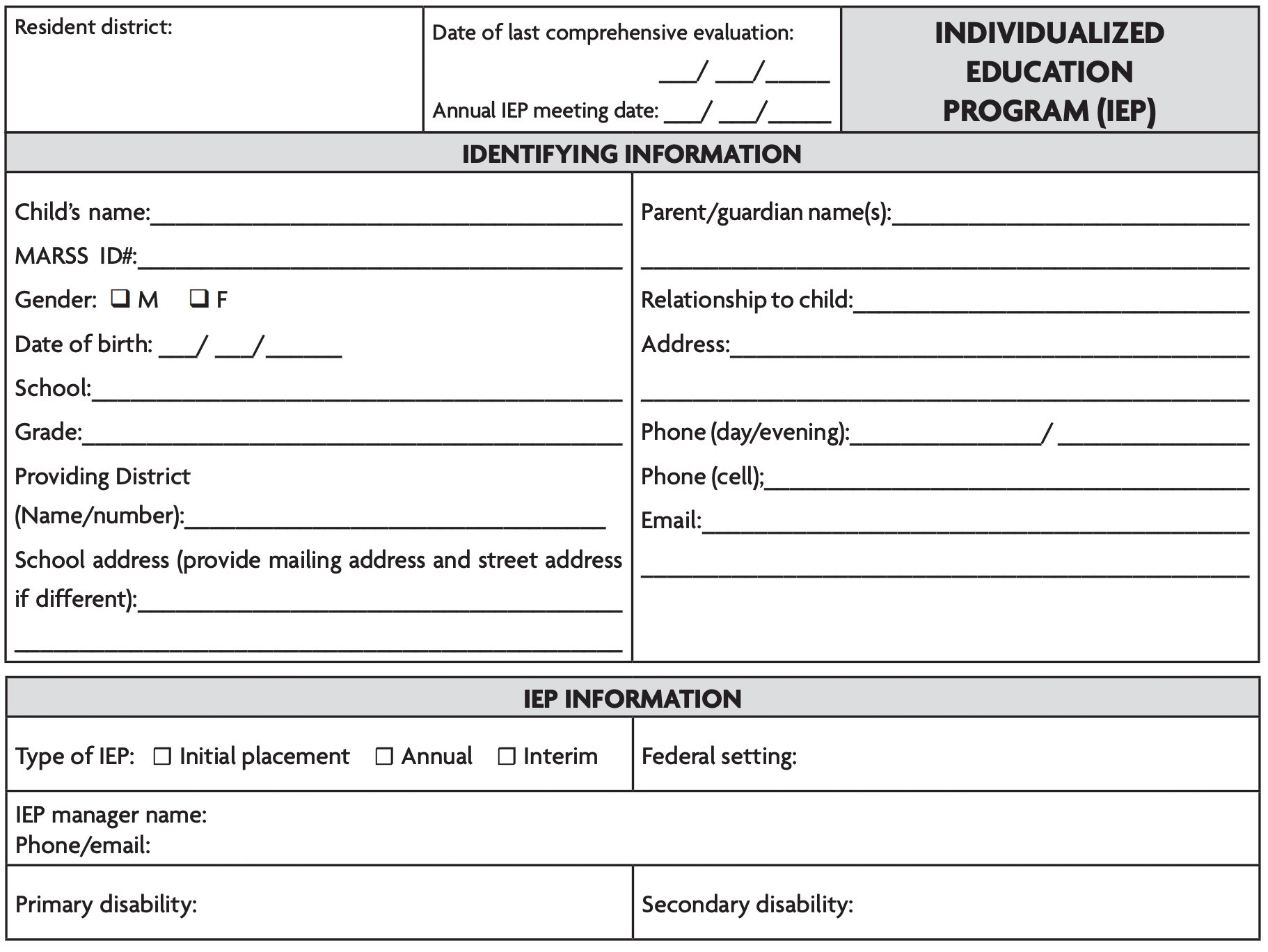
Print Version – IEP Identifying Information Form
The IEP often includes the general information listed below. If it doesn’t, you may ask where the information can be found in your child’s records.
Date of last comprehensive evaluation: The date your child’s last comprehensive evaluation was completed.
IEP meeting date: The date the IEP was developed or reviewed. This date is considered to be the “annual IEP date.” If more than one meeting is held to develop an IEP, the IEP meeting date is considered to be the date of the first meeting.
Disability category: Lists the educational category of disability under which a child is eligible for special education services. Students may be eligible to receive services under more than one disability area. Services are determined by the child’s needs, not by the disability category.
Grade: Your child’s grade in school when the IEP is written. For students younger than age 5, either pre-K (pre-kindergarten) or early childhood special education (ECSE) typically is listed. The IEP is in effect for one year from the date it is written (unless it is changed by the IEP team), even if the child changes grades.
IEP manager name: See IEP Team description.
Here are the federal settings for children in kindergarten through graduation, or through age 21, as outlined in the Minnesota Department of Education’s instructional setting codes:
- Students receive special education services outside the regular education classroom for less than 21 percent of the day.
- Students receive special education services outside the regular education classroom, typically a resource room, for 21 percent to 60 percent of the school day.
- Students are outside of the regular education classroom for more than 60 percent of the day.
- Students receive special education services at separate school facilities for more than 50 percent of the school day.
- Students receive special education services at a private separate day school for more than 50 percent of the school day.
- Students receive special education services at a public residential facility for greater than 50 percent of the school day.
- Students receive special education services at a private residential facility for greater than 50 percent of the school day.
- Special education services are delivered in a homebound/hospital/home-based setting.
Federal settings for early childhood special education children ages 3 to kindergarten are determined differently. Visit PACER’s Early Childhood Project for more information.
Progress Reporting
This section of the IEP lists the scheduled times and methods that school staff will use to report progress on each IEP goal to parents. Your child’s progress on their annual goals must be measured, and you must be informed of:
- How often and by what method progress reports will be provided to you. The school must give you these reports at least as often as they report progress to parents whose children do not have disabilities. Reporting methods may include IEP progress reports issued with regular education report cards, midterm written reports, or other means.
- The extent to which that progress is sufficient to enable your child to achieve each goal by the end of the IEP year.
Parents Need to Know
- Making adequate progress is the key to an appropriate education.
- IEP progress reports are not the same as classroom grade reports. The IEP report notes progress on IEP goals while grade reports indicate progress in the general education curriculum.
- If your child is progressing as planned, the goals and objectives will be continued until the annual IEP review.
- If your child is not making sufficient progress toward meeting IEP goals, a team meeting must be held to revise the IEP. Parents may request this meeting.
- For more information, see PACER's handout "How Will I Know if My Child Is Making Progress?"
Present Levels of Academic Achievement and Functional Performance (PLAAFP)
IEP Form Example Section

Print Version – IEP PLAAFP Form
The PLAAFP statement describes the levels at which your child is working academically and functionally. The statement summarizes your child’s current status and educational needs in each performance area where there is a need.
Performance areas may include:
- Academic performance
- Communication status
- Functional skills (routine activities of everyday living)
- General intelligence
- Health
- Motor abilities
- Sensory status (such as vision and hearing)
- Social and emotional status
- Transition to adult living, including employment, postsecondary education and training, and independent living (when appropriate)
The IEP team will consider how your child’s disability affects their grade-level learning at school. Understanding the impact of your child’s disability helps the team determine what services and accommodations your child needs in order to be educated in the general education curriculum to the maximum extent appropriate. (The general education curriculum means the courses the school uses to teach children within the school district.) Children learn information and skills necessary to meet state academic standards and graduation requirements by participating in the general education curriculum, regardless of classroom placement.
The purpose of the PLAAFP statement is to describe what your child can do at the time the IEP is developed. The information should be presented clearly with enough information to describe your child’s present skill levels. The statement should identify specific skills or behaviors requiring instruction.
Examples of PLAAFP statements:
Jason has a reading disability. He is in seventh grade and reads independently at a third-grade level. He has grade-level comprehension of materials read to him. Jason needs to improve his reading skills.
Lisa has attention deficit hyperactivity disorder (ADHD). Her organizational skills are not well developed. She loses assignments and notes for her academic classes approximately 75 percent of the time. As a result, Lisa comes to class without necessary materials. Due to these behaviors, Lisa is not able to complete grade-level work. Lisa needs instruction on organizational skills.
Angela is 10 years old but performs academically at a kindergarten level in reading and at a first-grade level in math. Although she benefits socially from being in mainstream classes, her class work in reading, math, science, and social studies needs to be modified. Angela needs to increase her academic skills.
Connor has autism. His academic skills are above grade level, but his social and communication skills are more than two years behind those of his grade-level peers. Connor needs instruction to understand nonverbal social and communication cues.
Parents Need to Know
- The present levels section of the IEP provides a snapshot of your child at a particular time and place.
- You have important information to share about your child.
- This section may include medical information related to your child’s disability.
- You and school professionals may see your child in different ways.
- It is important that you and the IEP team agree on your child’s needs as instruction will be based on those identified needs.
- All of your child’s educational needs described in the present level section must be met with services in the IEP.
- IEP services are determined by the child’s needs, not by the disability category.
- If an initial or three-year reevaluation has been completed, school staff must give you a copy of the evaluation summary report. It contains detailed information that will be used to develop the present level statement.
- The present levels section will include summary statements of your child’s performance in assessed areas and will be updated each year.
- Attachments to the IEP form may be used if the existing form does not have sufficient space to include all the information required in the IEP.
- A Place to Start: Understanding the present levels of academic achievement and functional performance statement
Learn more about this statement which will lead to the development of appropriate annual goals, accommodations, modifications, and other IEP services.
For preschool-age children, the team must consider how the disability affects the child’s participation in developmentally appropriate activities. For transition-age students (grade nine and above), the child’s present level of performance in the transition areas discussed on pages 13 to 15 must also be included.
From the PLAAFP statement, the team determines your child’s educational needs and develops the rest of the annual IEP, including goals, services, and modifications.
Statement of Measurable Annual Goals
IEP Form Example Section

Print Version – IEP Statement of Measurable Annual Goals Form
The IEP will have annual instructional goals that describe what your child is expected to accomplish within a year of writing the IEP when provided with special education instruction and related services. Each goal will have short-term objectives or benchmarks.
The goals are based on the PLAAFP statement. The IEP team will determine:
- What skill needs to be learned or what behavior needs to change so that your child can be involved in and make progress in the general education curriculum, or make progress on other appropriate goals and objectives
- Whether your child should increase, decrease, or maintain specific skills and behaviors
- What level of performance should be achieved and how that will be measured
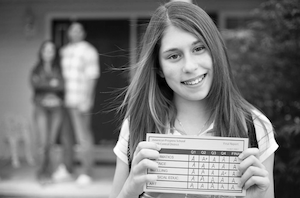
For example, the PLAAFP statement may say that your son writes disorganized paragraphs with incorrect spelling and punctuation 50 percent of the time. The goal may be to increase his level of producing organized paragraphs with correct spelling and punctuation to 90 percent of the time within one year with appropriate special education instruction. The IEP will record how progress on this goal will be measured.
Goals may cover any of several areas: academic, behavioral, functional, social, or other educational skills that are important for your child to master. Goals must be measurable so that the IEP team will know if your child is making progress on each one. The IEP must address all the educational needs that result from your child’s disability or disabilities, regardless of the disability label. Your child’s IEP will have as many pages as are necessary to include all instructional goals. If your child’s IEP includes at least one goal that addresses grade-level academic content standards in reading and/or mathematics, it meets the requirements for a “standards-based IEP.”
Each goal will have at least two objectives or benchmarks, or a combination of the two. Objectives are steps leading to the accomplishment of the goal. Benchmarks are developmental milestones.
Each objective includes several parts. For example, for your son’s written language goal, one of the objectives might be the following:
- Skill to be performed: Write an eight-sentence paragraph
- Conditions for evaluating: When given a subject by the teacher
- Criteria for evaluating: Includes a topic sentence and at least three supporting details
- Evaluation procedures: 90 percent accuracy as measured on his quarterly assignment chart
A second objective could cover the spelling and punctuation part of the goal.
Parents Need to Know
- Each goal must be measurable. Your child’s current level of performance must be described either in the goal or in the PLAAFP statement. Your child’s expected ending level of performance must be written in the goal statement.
- Terms such as “age-appropriate” and “grade-level” are not measurable unless the IEP clearly describes what is meant by these terms.
- As each year’s IEP goal is developed, you should consider what special education services will be necessary for your child to achieve that goal.
- Individualized Education Program (IEP) Goals
Learn more about instructional goals that describe what your child is expected to accomplish within the one year period of the IEP when provided with special education instruction and related services.
Minnesota Transition Planning
Personal Learning Plan Legislation. Minnesota school districts are required to assist all students, beginning no later than ninth grade, to “explore their educational, college, and career interests, aptitudes, and aspirations, and develop a plan for a smooth and successful transition to postsecondary education or employment.” Minnesota Statutes, section 120B.125 describes the required components of a comprehensive plan that must be reviewed and revised at least annually by the student, the student’s parent or guardian, and the school district.
The law states that if a student has an Individualized Education Program (IEP) that meets all of the components of the Personal Learning Plan, no additional transition plan is needed. Parents will want to be sure the IEP addresses all of the required components and that the student has access, as needed, to Personal Learning Plan resources that are available to all students in the district. For more information, see Minnesota Department of Education’s Personal Learning Plans.
For students in grade 9 (or before, if determined necessary by the team), their IEP will continue to address needs in the performance areas previously described. However, at this stage those needs will be linked to the following transition areas:
- Postsecondary education and training
- Employment
- Independent living (when appropriate); this may include recreation and leisure, community participation, and home living.
IEP Form Example Section
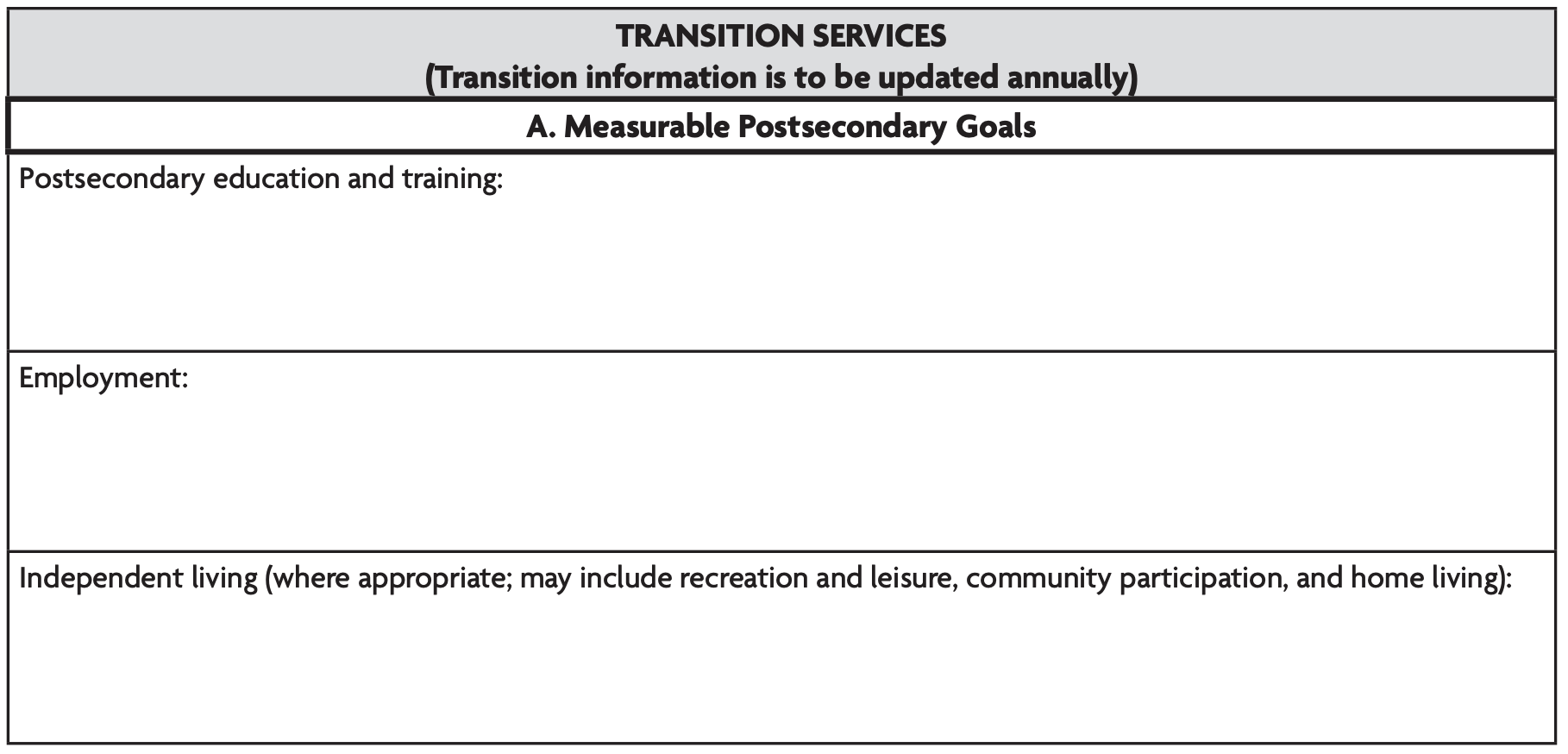
Print Version – IEP Transition Services Goals & Courses Form
The IEP team, which now includes your child, will develop measurable postsecondary goals in the areas of education, employment, and, when appropriate, independent living. The team will use observations, assessments, and interviews to help set appropriate goals. These long-term transition goals will guide the rest of the IEP because the purpose of special education is to prepare your child for life after high school.
The IEP team will determine what steps are necessary to help your child achieve their postsecondary goals. The courses of study section of the IEP helps the team plan future course work so the student can achieve their long-term postsecondary goals. The IEP form documents the courses to be taken each year. This process will enable the team to see annually how the student is progressing toward graduation requirements.
IEP Form Example Section
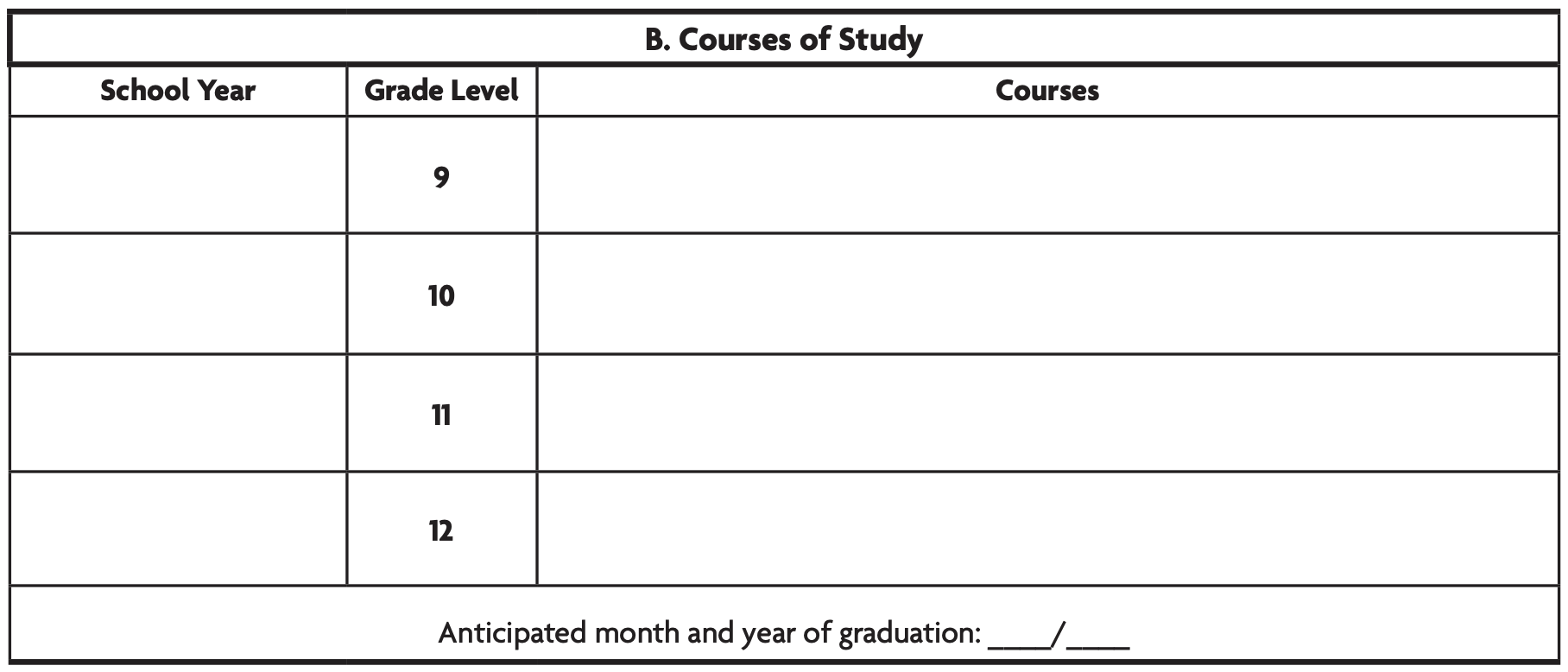
Print Version – IEP Transition Services Goals & Courses Form
Students must complete a set of course credits in a variety of subjects that are required by the state and school district in order to graduate. The IEP team may determine to change the credit requirements for some students with significant disabilities. For example, the student may not need to earn the foreign language credits or may receive social studies credits through work experience.
The IEP also includes a statement of transition services needed for the child to accomplish the measurable postsecondary goals. A child may need services such as community experiences, community links to other services, development of employment opportunities, functional vocational evaluation, instruction in daily living skills, or related services, such as transportation or counseling.
The IEP will record services and activities, as well as which agency is responsible for providing the service. In some cases, the state vocational rehabilitation agency, other agencies, or parents may choose to be responsible for the service. If an agency other than the school fails to provide the transition service as recorded in the IEP, the IEP team must meet to identify other ways to provide those services.
IEP Form Example Section
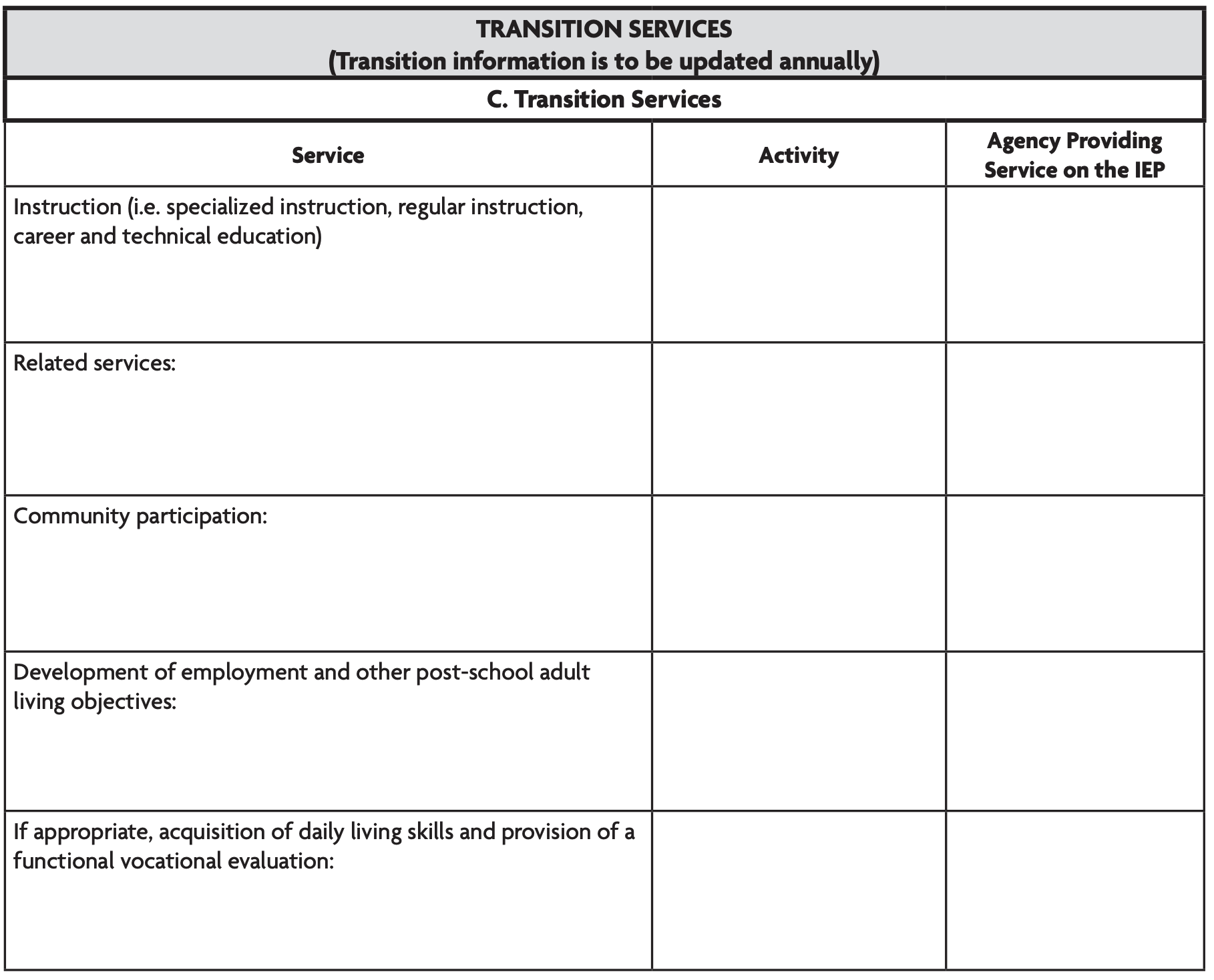
Print Version – IEP Transition Services Form
The IEP team will also determine if your student needs special education instruction to work on particular skills or behaviors to achieve the postsecondary goals. If so, measurable annual goals and objectives will be developed (see previous section on annual goals). An example might be learning to keep a homework schedule for school in order to successfully earn credits toward graduation so the child may attend postsecondary training. Another goal could relate to improving a specific skill the child needs in order to live independently.
The Workforce Innovation and Opportunity Act of 2014 (WIOA) includes requirements to ensure that students with disabilities gain skills and have experiences that lead to success in competitive integrated employment. Vocational Rehabilitation Services (VRS), in collaboration with local education agencies, must provide access to Pre-Employment Transition Services (Pre-ETS) for students with disabilities in ninth grade through age 21 based on individual need. Pre-ETS include the following activities:
- Job exploration counseling
- Work-based learning experiences that may include in-school or after school opportunities, or experience outside the traditional school setting (including internships) that is provided in an integrated environment to the maximum extent possible
- Counseling about enrollment in comprehensive transition or postsecondary educational programs at institutions of higher education
- Workplace readiness training to develop social and independent living skills
- Instruction in self-advocacy, which may include peer mentoring
Pre-ETS are intended to supplement rather than take the place of special education transition services, which are necessary to provide a free appropriate public education (FAPE) under the Individuals with Disabilities Education Act (IDEA). The IEP team can document services on the transition services section of the IEP.
WIOA also places limitations on subminimum wage employment for students and requires a series of action steps toward integrated, competitive employment that must be taken for youth with disabilities who are 24 or younger. For more information, see “A Transition Guide to Postsecondary Education and Employment for Students and Youth with Disabilities,” from the U.S. Department of Education, or visit PACER's National Parent Center on Transition and Employment.
Parents Need to Know
- The student must be invited to the transition IEP meeting.
- When the IEP team looks at the courses of study, ask how the child is doing in achieving the required number of credits for graduation.
- It’s important to consider all areas of transition because many children with disabilities leave high school lacking the academic, technical, and social skills necessary to continue in postsecondary training, or find and maintain employment.
- Transition services may be provided for some children younger than grade nine if they are at risk of dropping out of school before age 16, or if the services would enhance employment or other educational outcomes.
- IEP team decisions should include input from the student, parents, and others from the student’s school and community life.
- The team must make sure that the child’s own desires and interests are considered.
- Through an IEP team decision, students with disabilities may remain in school until they become 22 years old if they have not completed their IEP goals, even if they have met the district’s credit requirements for a diploma.
- If your student graduates and accepts a diploma, they no longer qualify for the services mentioned above.
- When appropriate, help your child learn to be a self-advocate. Self-advocacy skills may be an appropriate goal on the IEP.
Services and Modifications
The IEP outlines the special education, related services, and other supports your child will receive. Specific services and supports are given so that your child can, as much as is appropriate:
- Advance toward accomplishing annual goals
- Learn and participate with other children with and without disabilities
- Participate and make progress in the general education curriculum
- Participate in extracurricular or nonacademic activities
Each service should be based on research to the extent practical and give clear direction to staff on how to serve your child. Terms such as “when available” and “if necessary” should be avoided unless further clarified.
Services and modifications include special education and related services, supplementary aids and services, and program modifications and supports for school personnel as detailed in the following sections.
Special Education and Related Services
IEP Form Example Section
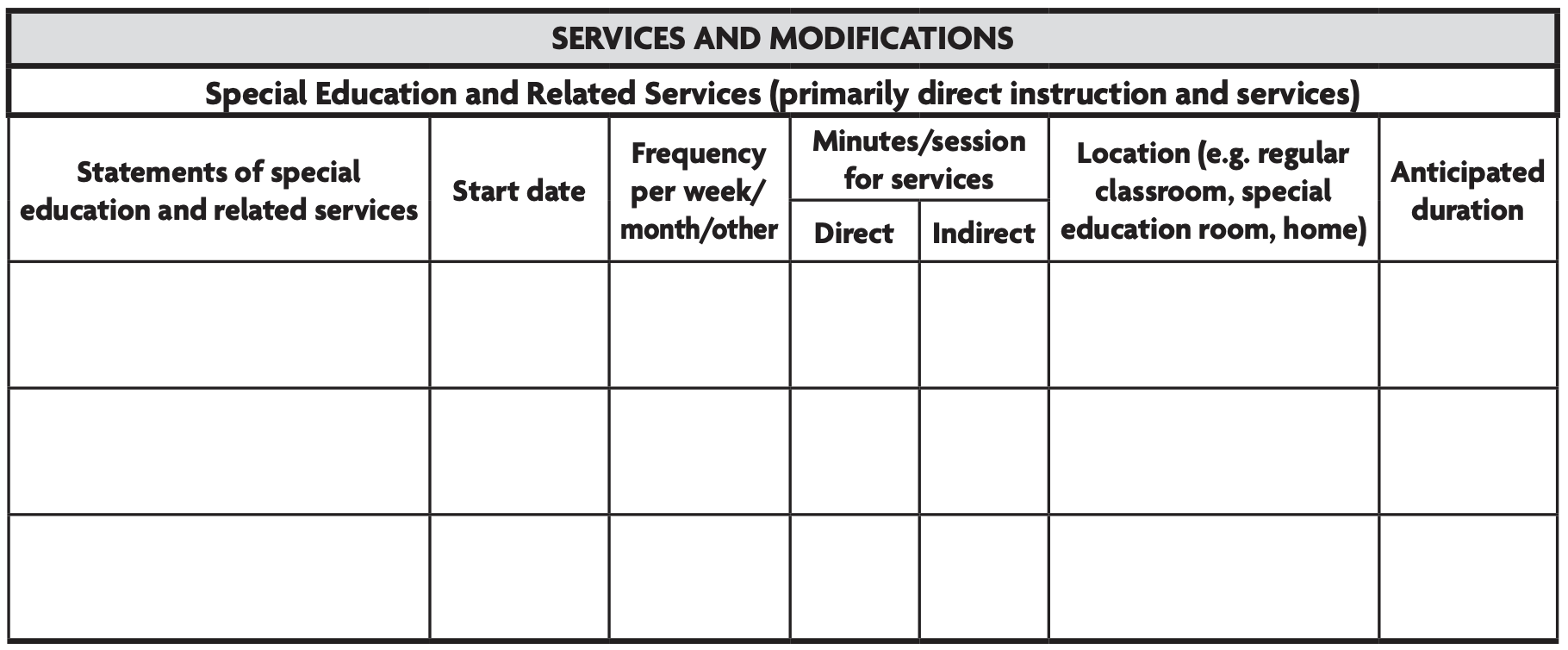
Print Version – IEP Services and Modifications Form
There is a relationship between the goals in your child’s IEP and the special education and related services the school provides. For example, if your child with a learning disability has a goal to improve reading by one grade level, then services provided by licensed learning disability staff to help your child accomplish that goal during the current IEP year will be listed in this section of the IEP.
Direct services are provided by a licensed special education teacher or a related services professional who instructs your child. This section of the IEP will include:
- Amount of time to provide that instruction or service (in minutes per session)
- Frequency of services (the number of times per week or month)
- Starting date and expected duration for services
- Location where the service will be provided (such as in a regular or special education classroom, home, or other setting)
Indirect services are provided by a special education teacher or related services professional working with other professionals or with parents. These services could include consultation, modifications of curriculum for the child, observation of the child, or cooperative planning. The services are provided on behalf of your child and not directly to your child.
Parents Need to Know
- Direct and Indirect Services
This handout explains these terms in more detail.
Supplementary Aids and Services
IEP Form Example Section

Print Version – IEP Supplementary Aids and Services Form
This area of the IEP records services such as accommodations, assistive technology, and paraprofessional support. These services support the child in the classroom as well as in nonacademic and extracurricular activities.
Accommodations level the playing field so a child can demonstrate knowledge without lowering or changing the standard or the level of the class work or of a test. See PACER’s handout School Accommodation Ideas for Students Who Receive Section 504 or Special Education Services.
Assistive technology includes devices as well as specific services, such as maintaining or repairing equipment. The IEP team will use evaluation data to determine which devices and services are appropriate.
IDEA requires schools to provide assistive technology if the IEP team determines a child needs it in order to receive an appropriate education. The team must plan for acquiring, operating, maintaining, and repairing assistive technology, as well as for training the child, staff, and family in its use and care. The team should also develop a plan in case the service is unavailable or the device breaks down.
Assistive technology can include a range of low-tech and high-tech equipment, such as pen grips, lap boards, feeding utensils, augmentative and alternative communication devices (ACC), computers, apps, calculators, classroom amplification, or recorded textbooks. PACER’s Simon Technology Center has more information about assistive technology.
If a paraprofessional is listed in this section, both your child’s need for this service and the specific responsibilities of the paraprofessional must be listed.
Program Modifications and Supports for School Personnel
IEP Form Example Section

Print Version – IEP Program Modifications Form
Program modifications lower or change the level of difficulty or focus of class work or of a test. See PACER’s handout School Modification Ideas for Students Who Receive Special Education Services.
Supports for school personnel may be necessary so that your child can fully participate in school. For example, a consultant might provide suggestions to the regular education teacher for including your child fully in the classroom or train staff to use an assistive technology device. These services are also called indirect services provided on behalf of your child.
Parents Need to Know
Ask yourself, “With this service commitment, is it reasonable to expect that my child can achieve their IEP goals and also make meaningful progress in the general education curriculum?” If the answer is no, discuss your concerns with the IEP team.
Least Restrictive Environment Explanation
IEP Form Example Section

Print Version – IEP Least Restrictive Environment Form
The least restrictive environment (LRE) for a child with disabilities is an educational setting that provides an appropriate program, including any necessary special supports, in as typical a school environment as possible. As much as is appropriate for the individual child, children with disabilities should attend the school they would typically go to if they did not have disabilities. They should have the opportunity to participate in extracurricular and nonacademic activities with children who do not have disabilities.
These decisions are made by the IEP team based on the child’s needs. The IEP must explain why and how much time your child will be educated or participate in activities outside of the regular education setting. The explanation will include why the nature and severity of your child’s disability is such that they must be removed from general education to receive services.
You must be invited to participate in all educational placement decisions for your child. If you are not able to attend a meeting when a placement decision is made, the school must use other methods, such as individual or conference calls or video conferencing, to help you participate. The school must keep a record of how staff tried to help you be involved in making the decision.
In addition, you must be informed about the placement alternatives that are available for your child. The IEP team will discuss these alternatives and together you will decide what is most appropriate to meet your child’s needs in the least restrictive environment. The services must be developed to fit your child, not the other way around. IDEA requires school districts to have a variety of placement settings, called federal settings, available to meet the individual needs of children.
Parents Need to Know
"To the maximum extent appropriate, children with disabilities, including children in public or private institutions or other care facilities, are educated with children who are not disabled; and special classes, separate schooling, or other removal of children with disabilities from the regular educational environment occurs only if nature or severity of the disability is such that education in regular classes with the use of supplementary aids and services cannot be achieved satisfactorily."
34 CFR 300.114(a)(2)
Least Restrictive Environment (LRE): What Parents Need to Know
Learn more about how your child’s school must make sure that your child with disabilities is educated with children without disabilities to the maximum extent appropriate for your child.
Minnesota Accountability and Graduation Assessments
All public school children must take statewide and district-wide student achievement tests at specified times. Schools are required to include children with disabilities in these accountability assessments. The IEP team must discuss your child’s inclusion in these tests.
According to the Minnesota Department of Education, the Minnesota Comprehensive Assessments (MCAs) and alternate assessment, Minnesota Test of Academic Skills (MTAS), are the statewide tests that help districts measure student progress toward Minnesota’s academic standards. They also meet the federal requirements of the Every Student Succeeds Act (ESSA). Most students take the MCA, but students who receive special education services and meet eligibility criteria may take the MTAS.
Parents Need to Know
- Talk with your child's IEP team about which state assessments are required during this IEP year for your child.
- If school staff recommend an alternate assessment at the IEP team meeting, discuss the requirements for taking that assessment with the IEP team.
- Ask for information about current graduation assessments and requirements if your child is in the ninth grade or above.
- Minnesota's accountability assessment program is designed to measure:
- How well students, as a group, are achieving according to the Minnesota academic standards
- Proficiency of Minnesota public school graduates
- Students' progress, as a group, over time
District-wide Accountability Assessments
The IEP team must address district-wide assessments each time the student is in a grade (or will be during this IEP period) where such assessments are given. If assessments are given in the child’s grade, the team will discuss whether that assessment is appropriate for this child. If accommodations are needed, they must be documented on the IEP. If the assessment is not appropriate, the IEP must state the reasons, document which alternative assessment will be given, and say why it is appropriate.
Accommodations for Assessments

The purpose of statewide testing is to understand how well students are meeting Minnesota’s academic standards set for all children. Some students with disabilities need accommodations to take these tests in order to reduce or eliminate the effect of the disability on test performance. The goal of accommodations is to level the playing field while maintaining the level of standards being tested. A student who has accommodations takes the same test as students without disabilities. The following types of accommodations may be made based on a student’s needs:
- Presentation accommodations allow students to obtain information in ways other than reading standard print. This accommodation includes auditory, multisensory, tactile (touch), and visual methods. For example, a boy who is visually impaired might have the math script read to him.
- Response accommodations allow students to show what they know in different ways. For example, a student who is nonverbal may respond to test questions using an augmentative and alternative communication (ACC) device.
- Setting accommodations allow students to take the tests in a different setting or under different conditions. (Although testing in a small group and individual test administration are allowed for all students, writing it in the IEP is helpful for school staff.)
- Timing and scheduling accommodations give students additional time to complete the test or change the way the testing time is organized. (Because the tests are not timed for any student, extended time need not be written on the IEP.)
Accommodations are determined by the IEP team and written on the IEP. Team members should:
- Be knowledgeable of state and district academic standards and assessments
- Look at what accommodations increase the student’s access to the general education curriculum (the subject content that all students are taught)
- Consider the accommodations routinely used by the student in daily classroom instruction
Minnesota provides a list of possible testing accommodations, but IEP teams may consider others that are not on the list. The team may contact the Minnesota Department of Education to verify that a suggested accommodation will not invalidate the assessment.
For more information on accommodations in assessments, see our section "Minnesota Statewide Assessment Testing."
Parents Need to Know
- Accommodations on statewide tests are made by the student's IEP team.
- Accommodations that the student is receiving on the IEP should be considered for accommodations on statewide tests.
- Statewide tests are not timed for any student.
Transfer of Rights at Age of Majority
IEP Form Example Section

Print Version – IEP Transfer of Rights at Age of Majority Form
When a student reaches the age of majority, which in Minnesota occurs on their 18th birthday, all their parent’s rights under IDEA transfer to them (34 C.F.R. § 300.520). IDEA requires school districts to include in the IEP a statement which documents that at least one year before the student turns 18, the student has been informed of this transfer of educational decision-making rights from their parents to them, if applicable (34 C.F.R. § 300.320 (c)). In some cases, parents follow a legal process to maintain educational decision-making rights for their adult children with disabilities even after they turn 18, for example, through becoming their legal guardians.
Recently, the Minnesota statutes related to guardianship were revised to include this definition of supported decision making: “assistance from one or more persons of an individual’s choosing in understanding the nature and consequences of potential personal and financial decisions which enables the individual to make the decisions and, when consistent with the individual’s wishes, in communicating a decision once made” (Minn. Stat. § 524.5-102, Subd.16a.). Minnesota special education laws have not yet been revised to include a definition of supported decision making as it relates to educational decisions for students who are 18 or older and have an IEP.
Parents Need to Know
- Parents continue to have the right to access their student’s educational records after they turn 18 if they claim their child as a dependent for tax reporting purposes.
- Parents will also continue to receive notices of their child’s IEP meetings after they turn 18, but receiving a meeting notice is not the same as being invited to a meeting.
- After they turn 18, students who have the right to make their own educational decisions may want to keep their parent(s) involved on their IEP team for support. Students can document in writing to the IEP case manager exactly how they want their parent(s) to stay involved. For example, they can request their parent(s) be invited to any meeting where their IEP services are discussed.
- Students who have the right to make their own educational decisions at the age of 18 can ask that their preferences for how they want to keep their parent(s) involved on their IEP team be documented in the Present Levels of the IEP.
Extended School Year
IEP Form Example Section

Print Version – IEP Extended School Year Form
Some children need services that extend beyond the normal school year. Such services are referred to as extended school year services (ESY). The IEP team must discuss ESY services at the annual IEP meeting; if services are needed, that information must be indicated on the IEP.
The school may not limit ESY services to particular disabilities or limit the type, amount, or duration of those services. An ESY program must be tied to your child’s need for services, including, but not limited to: the need to attain or maintain self-sufficiency skills (sometimes called functional skills), the likelihood of significant regression, or the necessity of ESY for the provision of a free appropriate public education (FAPE).
In making the ESY decision, the IEP team must consider the following factors, if relevant: progress and maintenance of skills during the regular school year, degree of impairment, rate of progress, behavioral or physical problems, availability of alternative resources, ability to interact with peers without disabilities, areas of curriculum that need continuous attention, or vocational needs.
The ESY services are usually different from the services provided during the school year. ESY services that are written into your child’s IEP must be provided at no cost to you.
Parents Need to Know
- The determination of whether or not your child needs extended school year services must be documented.
- Minnesota Rule 3525.0755 provides additional guidance on ESY services.
- ESY is not the same as summer school. School districts have the choice of whether to offer summer school to students while ESY must be offered to eligible special education students.
- Extended School Year Services: What Parents Need to Know
This PACER handout explains more about ESY service eligibility and determination.
